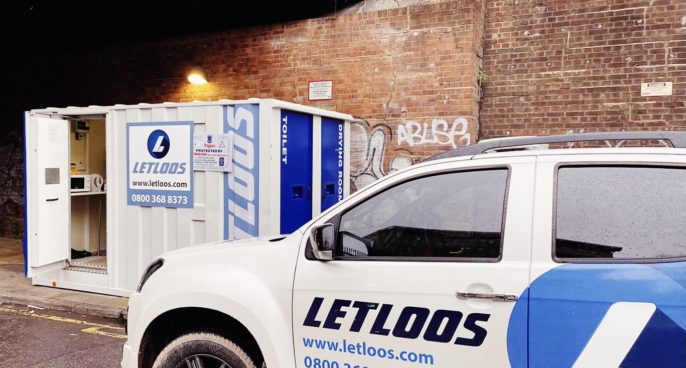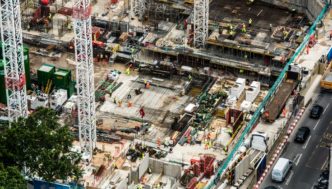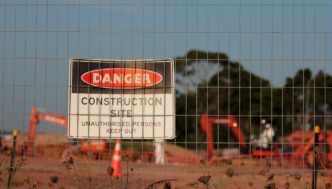
Anyone involved in the construction or project management business will likely be familiar with the term “welfare unit”, especially if they are in a position of authority. Despite the ubiquity of these useful units, there is still some confusion around what they actually consist of, when they are appropriate and why they are needed.
This handy and informative guide aims to answer all of those questions and more, teaching you everything you’d ever need to know about the important role that welfare units play and your responsibilities with regard to them. We’ll also give you some helpful pointers to keep in mind when it comes to hiring a welfare unit, ensuring you’re equipped with all the information you need to plan your next project efficiently.
Table of Contents
- 1 What is a welfare unit?
- 2 When are welfare units appropriate?
- 3 Why do you need a welfare unit?
- 4 What are the benefits of a welfare unit?
- 5 Things to consider when hiring a welfare unit
- 6 Who is responsible for welfare facilities?
- 7 What are the minimum requirements of welfare facilities?
- 8 Call in the professionals
What is a welfare unit?
Simply put, a welfare unit is a self-contained unit which provides all of the amenities that the workers on and visitors to a construction site might need. Though the exact particulars of a welfare unit can vary from job to job depending on the needs of the workers in question and the specifications of the project manager, they can include the following:
- All welfare units should provide users with a clean, safe and well-maintained place to answer the call of nature while at work. This should comprise a chemically flushed toilet to ensure that hygiene levels remain high and unpleasant odours are kept to a minimum within (and without) the welfare unit. Essential items like toilet paper should always be stocked, as well.
- Washroom facilities. In addition to the toilet, staff members must also have a place to freshen up after using the facilities, when beginning their shift or at the end of the day. This should include hot running water and a sink big enough to wash their face in, as well as adequate soap or hand sanitiser to allow them to stay hygienic in the workplace.
- Changing rooms. Many construction workers will arrive at the site in their civilian clothes, only changing into their hi-vis vests, boots and other personal protective equipment (PPE) when they begin work. Providing them with a place to change and store their personal possessions (such as lockers) while they are working is another key concern when ordering a welfare unit.
- Shower units. While these are not always required on every building site, they can be an essential addition for jobs which are especially dirty or dangerous. For example, any work which involves the handling of sewage, the demolition of an existing structure or the pouring and mixing of concrete will invariably entail higher levels of dirt than others. Similarly, any situation wherein staff are required to come into contact with hazardous substances demands the presence of showers to allow them to wash themselves thoroughly after the fact.
- Cooking and dining facilities. The provision of basic cooking implements such as a kettle and a microwave allows staff members to bring their own lunch or dinner with them onsite. This not only fulfils an obligation to your employees, but also ensures they do not have to leave the worksite during working hours, thus reducing downtime and increasing productivity.
- Seating and rest areas. After preparing their meals, staff should be provided with a place to sit down and consume them. That’s also the case even when they aren’t eating, but simply taking a break. As such, tables and chairs are a necessary element of most welfare units too, giving workers a space in which they can relax between shifts.
There are two types of welfare units – static ones and portable ones. Static ones can provide a solution for a long-term construction project, but mobile welfare units are normally preferable due to the fact that they can be moved around the site as and when it’s necessary. They are also easier to install at the outset of a project and quicker to remove when it has been completed.
When are welfare units appropriate?
Those in charge of a construction site are required by law to provide adequate facilities for their members of staff for the duration of the project. For short-term jobs (a month or less in duration) or for certain situations, it may be possible to arrange to use the existing facilities of the building to which the site is attached, although this arrangement must be agreed upon in advance with the relevant decision-maker and should never be taken for granted.
In all other scenarios – especially those which are expected to last for 30 days or more – welfare units are an appropriate solution to the problem. As self-contained units that can be easily and quickly moved to the desired location, mobile welfare units are a particularly effective method of meeting all of your legal obligations in one fell swoop. However you manage the situation, remember that providing adequate facilities for your staff members is your responsibility.
Why do you need a welfare unit?
The primary reason why a welfare unit is required on a construction site is because in general, such sites do not enjoy access to existing amenities, such as toilets, washrooms and kitchen areas. They will frequently not even offer an electrical connection, meaning you must find an alternative way to cater to the needs of your staff. This is why welfare units are necessary on a basic, human level.
However, it should not be forgotten that welfare units are actually also a legal requirement for any construction project that is expected to last 30 days or more. As well as providing these facilities, site managers are also required to ensure that they are maintained to a good degree of hygiene and cleanliness for the entire duration of the project. The facilities must also be sizable enough to cater to the needs of the number of employees that will be using them.
For projects where there are multiple sites in operation under the same management umbrella at the same time, it is acceptable to use one set of facilities to cater to both sets of staff. However, these facilities must be located within a “reasonable” distance of both sites.
What are the benefits of a welfare unit?
For projects where there are no existing amenities in place, a welfare unit for hire can provide an excellent solution to the problem, bringing with it a wide range of benefits for both staff members and project managers. These include:
Convenience and efficiency
As self-contained units which combine toilets, cooking facilities, washrooms, changing rooms, storage lockers and a rest area in one neat package, welfare units offer a degree of convenience than can make life easier for project managers with a thousand plates to keep spinning. They can significantly simplify the planning of a project and offer a far easier solution than trying to source each individual element separately.
Productivity and morale
Staff who are provided with a high standard of facilities are more likely to feel content in their roles, thus boosting morale and resulting in enhanced productivity. What’s more, situating everything that an employee might need during the course of the working day onsite will discourage them from leaving it, thus leading to less downtime and, once again, enhanced productivity.
Client consideration
For construction sites which are attached to an existing building, whether that’s to renovate the premises, extend them or add entirely new features, there may be a temptation to simply encourage staff to use the facilities inside the adjacent building. While such an arrangement may be possible for shorter jobs, it should never be taken for granted. Indeed, this can place a burden of disruption on the client and encroach on their privacy, so should be avoided if possible.
Sanitation and the environment
When you’ve got to answer the call of nature, you’ve got to answer the call of nature. Failure to provide adequate onsite facilities for your staff may encourage them to simply relieve themselves on the site itself, in turn creating sanitation and safety problems that not only endanger the health and wellbeing of other members of staff, but also place an environmental burden on the surrounding area. The provision of toilets and hot-wash facilities negates this issue.
Legal compliance
Last but most certainly not least, sourcing welfare units for hire can allow project managers to efficiently comply with their legal obligations. The Occupational Safety and Health Administration (OSHA) demands the provision of portable toilets in any location where sewer line access is cut for 72 hours or more, while the Health and Safety Executive (HSE) requires such arrangements be made for any job projected to last for 30 days or more. A welfare unit can avoid transgression of these regulations and the imposition of a hefty fine as a result.
Things to consider when hiring a welfare unit
If you decide that hiring a mobile welfare unit is the most sensible strategy for your upcoming project, there are a number of things you must consider at the planning stage. Failure to properly prepare the site in advance of the beginning of the works can result in any number of logistical and practical headaches, so be sure to keep in mind the following points:
- With the ever-increasing number of construction projects in operation around the UK, welfare units for hire are often in high demand. In order to ensure you can get hold of the facilities you need on the dates you require them, it’s a good idea to make enquiries and contract the services of a professional welfare unit rental company well in advance of the start date.
- Depending on the nature of the work being conducted on your site, you may require additional facilities within the welfare unit itself, or else the rental of supplementary facilities to satisfy your needs. For example, if the project entails exceedingly dirty work (such as sewer maintenance, demolition jobs, concrete pouring etc.) or requires your staff members to handle hazardous substances, you may need the inclusion of showering blocks.
- Take into account the total number of workers on your payroll, as well as the maximum number of staff you expect to be working onsite at any one time, and ensure you have enough facilities to meet those demands. At LetLoos, our welfare units are designed to offer enough space to accommodate six team members at any one time.
- Installation and removal. You should have already envisaged in advance how you are going to manoeuvre the welfare units from the delivery trucks upon which they will arrive into position at your site. In the interests of health and safety, is highly advisable to use a forklift or crane to mechanically manoeuvre them. However, if manual manoeuvring cannot be avoided, you must ensure you take all adequate precautions.
- Following on from the previous point, the specific location where you plan to position the welfare unit is also crucial. It must take into account the traffic flow of both pedestrians and vehicles without inhibiting the routes of either, while it must also be at a close enough distance from the main construction site to allow workers to quickly and easily reach it when needed.
- The exact layout of the welfare units is a negotiable aspect and one to which you should give considerable thought. For example, hot-wash facilities should be located close to both the toilets and changing rooms, while a plentiful supply of clean and wholesome drinking water must be located in the food preparation area.
- The rest area will normally demand the provision of adequate heating facilities to ensure your staff remain warm while taking their breaks onsite. It is recommended to use electrical heating appliances as opposed to LPG ones, since the latter can involve unnecessary health and safety risks in the case of accident or emergency.
- It is also your legal responsibility to ensure the welfare units are regularly cleaned and that hygienic levels are kept to a high standard. LetLoos always provide weekly emptying and cleaning services as standard, taking one less worry off your mind and making your job that little bit easier.
Who is responsible for welfare facilities?
We’ve mentioned that site managers are legally obliged to provide welfare facilities for workers on site. However, things aren’t always so straightforward when it comes to responsibility. In many cases, contractors will be brought in to work on a client’s site – which leaves both the client and contractor unsure who is actually responsible.
In truth, the answer is both. It’s up to the contractor to provide and maintain suitable welfare facilities, including welfare units, for construction workers. However, the client they’re working for is also responsible for making sure this happens. In other words, of an issue was to arise with regards to inadequate working conditions, neither the client nor the contractor can plead ignorance or pass the buck.
To add a little more complexity, some projects involve more than one contractor. If this is the case, you’re required by the 2015 Construction (Design and Management) Regulations to appoint a principal contractor. That role should be made clear in writing and included on CDM documentation.
Then, as above, welfare facilities are the responsibility of both the principal contractor and the client. It’s worth nothing that other contractors working on site still have a degree of responsibility to ensure workers under their control have adequate facilities. Again, it’s not a case of passing the buck – you’ll need to discuss any inadequacies with the client and principal contractor.
What are the minimum requirements of welfare facilities?
The minimum requirements of welfare facilities applies to both the function of welfare units and the quantity or scale of facilities available. Firstly, welfare units must provide adequate toilet and washing facilities along with a place to warm up and eat food. They should also provide workers with somewhere to store clothing.
More specifically, washing facilities should include a supply of clean hot and cold running water, soap for cleaning and towels for drying. That should be paired with sinks that are large enough to wash faces, hands and forearms, along with sufficient lighting and ventilation.
In terms of quantity, the minimum requirement for welfare facilities depends on the numbers of people who will use them, and the distance workers will have to travel to the welfare units in question. According to BS6465-1:2006, a ratio of one toilet to seven people is adequate.
However, if three of those seven people are located across site, a separate unit may be required to avoid constant travelling to and from the facilities – not to mention the time lost by doing so.
Finally, it’s also required that your welfare units or other facilities are adequately cleaned and maintained. As an example, the ratio of one toilet per seven people requires portable toilets to be emptied at least once a week. Daily cleaning is usually recommended as a minimum, but as you might expect, it depends on usage. You should also factor in the emptying of waste, refilling of water supply tanks and other ongoing maintenance.
Call in the professionals
Do you have an important construction project on the horizon? If so, it’s important that you ensure you provide adequate facilities to satisfy the needs of your work team for the duration of the project. A well-equipped welfare unit can be just the solution you’re looking for, offering all of the amenities you need in one, self-contained package.
At LetLoos, our ultra-modern welfare units are constructed from durable materials and finished to the highest standards, ensuring they comply with all legal regulations. They have enough space to accommodate six of your staff at once and come furnished with all the appliances and essentials you’ll need – we’ll even provide a packet of biscuits to get you up and running! The unit will arrive steam-cleaned and we’ll provide further emptying and cleaning services on a weekly basis throughout the rental period, making your job as easy as possible.
Do you want to learn more about the options available in our welfare units? To discuss the amenities that we can offer, the timeframe of your project and to obtain a free, no-obligation quote for the hire of the welfare unit, get in touch with us today. We’ll be happy to run through your options and provide any advice you might need, ensuring your project goes off without delay.



